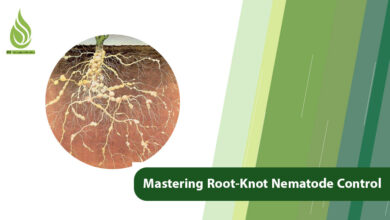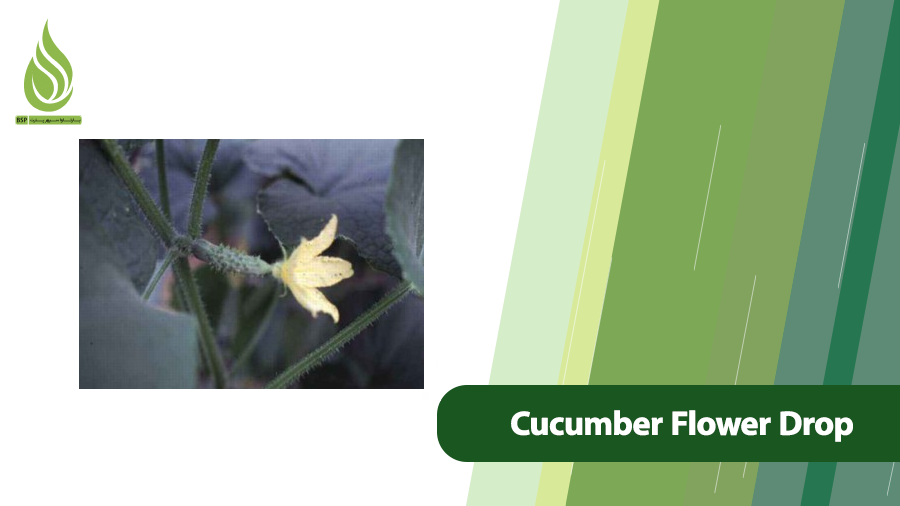
Reasons for Cucumber Flower Drop & Ways to Prevent It
Cucumber flower drop is a common concern during the flowering stage. This issue can significantly reduce your crop yield. To prevent cucumber flower drop, you need to understand its causes. In this article, we’ll explore the reasons behind cucumber flower drop and effective solutions to address it. Keep reading to learn more.
When is Cucumber Flower Drop Abnormal?
Some flower drop is normal for cucumber plants, but excessive drop is not and can lead to low or no fruit production, or even twisted, small, or misshapen cucumbers. When a large number of cucumber flowers fall off before turning into fruit, it reduces crop productivity and can result in losses for growers.
Cucumber plants produce two types of flowers: male and female. Female flowers have an ovary and, after pollination, develop into cucumbers. Male flowers are responsible for pollination and naturally drop after their role is complete. However, female flowers should remain on the plant to produce fruit. The first flowers to appear on the plant are typically male blossoms. About 10 days later, female flowers form, and pollination occurs. If, at this stage, female flowers start dropping along with the male ones, pollination has likely not happened properly, and no fruit will form.
Female flower drop is normal only when the fruit has already developed sufficiently. Several factors can prevent proper pollination, causing both male and female flowers to drop. Let’s take a closer look at these causes below.
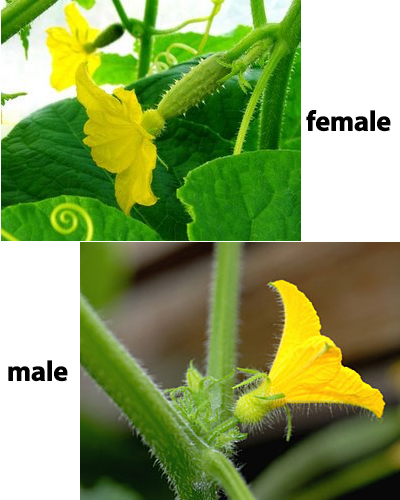
How to Identify Abnormal Cucumber Flowers Drop?
Before diving into the causes of cucumber flower drop, it’s important to know how to recognize when it’s a problem. Here are some common signs:
- Flowers turn yellow and drop before fully opening.
- Flowers are small, weak, and easily detach from the stem.
- No fruit forms after flowering, and the flowers drop.
- Dropped flowers show black or brown spots.
Why Do Cucumber Flowers Drop Before Producing Fruit?
In most cucumber plants, male flowers naturally drop after completing their role in pollination. However, when female flowers drop, it often indicates a systemic issue. Female flower drop before fruit formation can stem from several key causes:
- Insufficient pollinators, leading to incomplete pollination.
- Overwatering or underwatering.
- Temperatures above 95°F (35°C) or below 59°F (15°C). (The ideal temperature for cucumber flowering is between 68°F and 86°F, or 20°C to 30°C.)
- Deficiency in essential nutrients needed for fruit formation, such as potassium, phosphorus, boron, or calcium.
- Pests like thrips, spider mites, or aphids damaging the flowers, or fungal diseases like powdery mildew causing flower drop.
- Environmental stresses, such as sudden temperature changes, strong winds, or low light conditions.
- High soil salinity, which can hinder flower and ovary development.
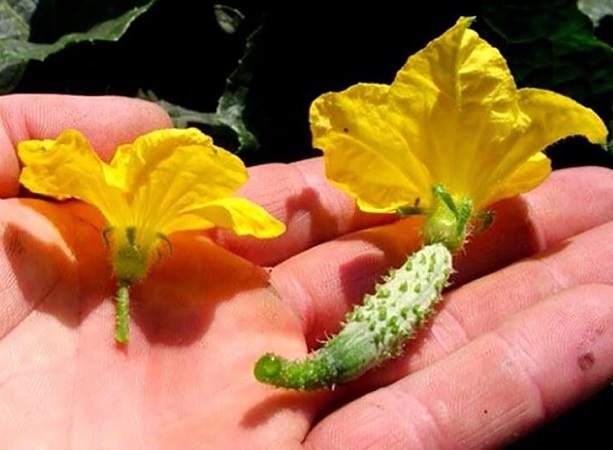
To boost flowering, use high-phosphorus and high-potassium fertilizers during the blooming period. Foliar spraying with calcium and boron can also help prevent flower drop.
How to Prevent Cucumber Flower Drop
Cucumber flower drop can cause significant losses for growers, but with a few practical strategies, you can minimize this issue. Follow these tips to prevent cucumber flower drop:
Ensure Optimal Environmental Conditions
Cucumber plants are sensitive to their environment. Sudden temperature changes, extreme heat or cold, high or low humidity, insufficient sunlight, or strong winds can damage flowers. High or low temperatures cause heat stress, which disrupts pollen activity and nutrient absorption. The ideal temperature range for cucumber growth is 73–81°F (23–27°C). Temperatures below 59°F (15°C) or above 86–95°F (30–35°C) can weaken flower development and lead to flower drop.
To avoid this, create suitable growing conditions for cucumbers. If you live in an area with unfavorable environmental conditions for cucumber cultivation, consider avoiding large-scale planting. Choosing resilient cucumber varieties is also highly recommended. There are various cucumber cultivars, some of which are better suited to your region’s conditions and are less prone to damage. When purchasing seeds, ensure the variety you select thrives in your local climate.
Proper Plant Nutrition
Cucumber plants require a balanced mix of macronutrients and micronutrients to grow effectively. A deficiency in any of these nutrients, especially the most essential nutrients, can hinder plant development and lead to issues like flower drop.
Among the various nutrients, potassium, phosphorus, calcium, and micronutrients like iron, zinc, manganese, and boron play a significant role in preventing flower drop. A shortage of any of these can cause cucumber flowers to fall prematurely. To avoid this, use well-balanced fertilizers to fully meet the plant’s nutritional needs.
Keep in mind that cucumber plants don’t only need potassium, phosphorus, and calcium! These nutrients are particularly important during fruit formation, but cucumbers also require other nutrients like nitrogen, sulfur, iron, magnesium, and more for overall growth.
To ensure healthy cucumber plants and prevent low cucumber yields, farmers create a tailored fertilization plan based on the plant’s growth stages, applying the necessary fertilizers at each phase. Fertilization can involve both organic and chemical options. To accurately assess soil needs, farmers often take soil samples before the growing season and send them to a lab for analysis. This helps identify the soil’s structure, nutrient levels, and deficiencies. The results guide farmers in developing an effective fertilization strategy.
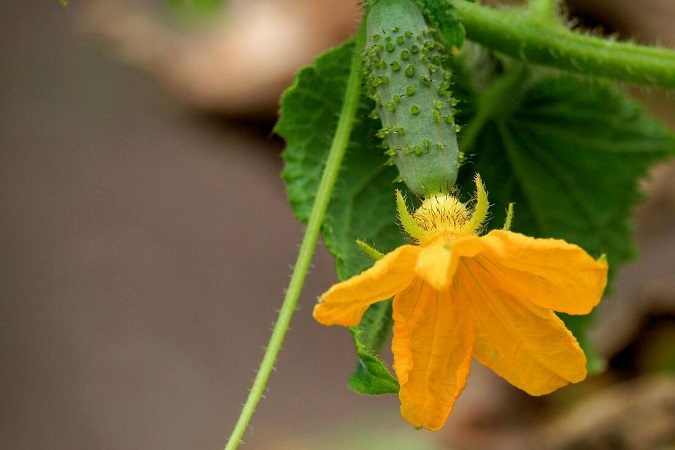
Nutrient deficiencies and alkaline soil are major causes of flower drop in plants.
Soil pH Management
Soil pH is a critical factor in plant productivity, especially for cucumbers. High soil pH or salty soil can cause flowers to drop. If the soil pH is too high, it needs to be adjusted before planting seeds. This is where soil testing really helps farmers!
A soil test reveals the soil’s pH level. For cucumber fields, the ideal soil pH ranges between 5 and 7. If the pH is above or below this range, corrective measures are necessary. Many agricultural soils in our country are alkaline and saline. To reduce soil alkalinity, sulfur-based fertilizers are commonly used.
One of the best sulfur-containing fertilizers for cucumber fields is ammonium sulfate. Barno ammonium sulfate, produced by Barsava Sepehr Part Company, helps you manage high pH and soil alkalinity. Proper pH control ensures that plants can effectively absorb nutrients, supporting normal growth.
Proper Irrigation
Cucumbers require consistently high moisture levels throughout their growth stages. Regular and adequate irrigation prevents water stress and helps retain flowers. The soil should stay consistently moist but not waterlogged. Using a drip irrigation system can ensure even water distribution and prevent water stress.
During flowering and fruit formation, the plant’s water needs increase. Irregular or insufficient irrigation during this period can lead to flower drop or lower fruit quality.
The Role of Pruning in Preventing Cucumber Flower Drop
Sometimes, overcrowding of plants prevents adequate light and airflow from reaching all the flowers, leading to flower drop. Planting with proper spacing can largely prevent this issue. If the plants are too dense, pruning can improve ventilation and light exposure. Removing excess branches and old leaves enhances airflow, reduces moisture around the plant, and helps prevent diseases.
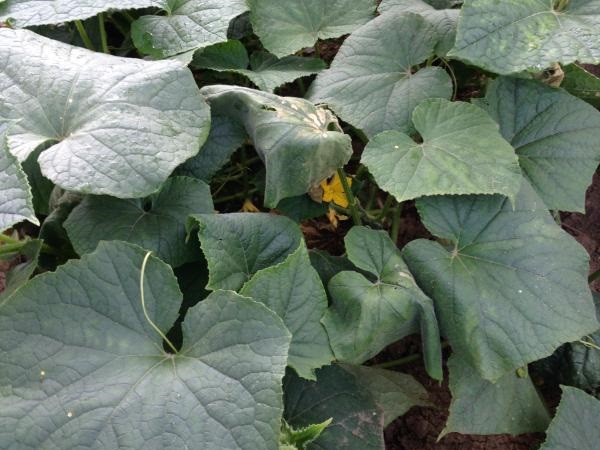
If the plant density is too high, pruning can be done to improve ventilation and light penetration.
When a plant has too many flowers, it may lack the resources to support them all. This causes competition among the flowers, resulting in some dropping. To avoid this, you can remove weaker flowers, allowing the stronger ones to continue developing.
Pest and Disease Control
Certain pests and diseases weaken cucumber plants by feeding on their sap, causing flower drop. Common cucumber pests and diseases include aphids, thrips, powdery mildew, and fusarium wilt, which can damage flowers. These pests can also cause the dropping or yellowing of leaves.
To prevent this, regularly inspect plants and take prompt action if signs of pests or diseases appear.
